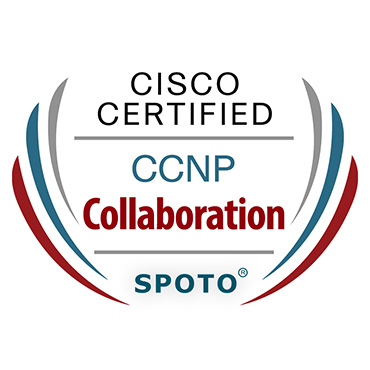You’ve been assigned to a project. That’s fantastic! You’ll need a project plan before you start working on your project.
While it may be tempting to go right into your project and figure things out as you go, creating a project plan first can yield far better results. You can find your team adrift or worse, going in multiple directions if you don’t have a fundamental project strategy.
When it comes to project management, proceeding without a project plan puts you at risk of exhausting available resources and failing to meet the client’s objectives. A project plan ensures that all stakeholders share the same vision, defines quantifiable project goals, fosters effective communication among team members and stakeholders, and serves as the foundation for project transparency. You’re setting yourself and your team up for project failure if you don’t have it.
Maybe you’ve done this before, or maybe this is your first major project, and you just googled “how to draft a project plan.” In any case, we’re here to assist you.
| Categories | Exam Code | Pass Exam Dumps |
|---|---|---|
| PMI | PMP | |
| RMP | ||
| CAPM | ||
| PgMP | ||
| ACP |
Table of Contents
What is the definition of a project plan?
A project plan, also known as a project management plan, is a document that outlines how a project will be carried out, monitored, controlled, and completed. This document explains the project’s goals and scope, and it acts as an official reference for the project team, the wider firm, and stakeholders.
It is a collection of numerous other documents that are prepared throughout the project planning phase. It’s more than just a schedule or a to-do list, albeit both elements are included. The project management plan is formally approved at the start of the project and then revised as needed throughout its duration.
What is the significance of project planning?
In the project management phases, project planning is a critical stage that follows initiation. By properly planning, you may break down the entire project into several steps and ensure that all resources are available on time.
Time, scope, and cost restrictions are reviewed during the project planning phase, and mitigation plans are devised if potential hazards are identified. You may also monitor your team’s performance and take the required steps to improve it by comparing actual progress to the project plan. Check out these seven areas where project planning is critical for project success.
The project management plan’s components
An example of a project plan has three components at its most basic level. Make a list of all of these elements to aid in the development of your project management strategy.
Activities
What will your team’s responsibilities be to complete the project? Measure progress, delegate tasks, allocate resources, track project time spent on tasks, and communicate effectively are all activities that should be included in your project plan.
Tasks
The project is divided into tasks for task management. These are the smaller jobs that build up your project’s overall picture. Incremental targets make it easier to measure performance and address bottlenecks, and identifying these tasks is crucial to developing your project management strategy.
Resources
With what are you tinkering? Of course, your budget is one of your resources. It’s also critical to comprehend your human and material resource needs. Would you need to engage temporary labor or subcontractors to complete this job, and how many people will you require? What physical or digital materials will be needed, and where will they be obtained?
How to make a project plan online in 9 easy stages
Don’t be afraid if you’re thinking, “Well, it seems really formal and serious.”
If you follow these nine project management procedures, you’ll be well on your way to not only planning a project online but also completing it successfully.

Step 1: Make a list of all stakeholders.
There are various stakeholders in your project, and not all of them will be involved in every detail. Customers, end-users of the product, the firm, its management, and the team working directly on the project are all project stakeholders.
Stakeholders may also include other organizations or individual community members who will be impacted by the project, depending on the nature of the initiative.
Step 2: Define responsibilities and roles.
After identifying your stakeholders, you’ll need to define the project’s essential project management abilities and competencies. You can define roles and assign duties to particular stakeholders once you have that list.
It’s important to remember that a role isn’t the same as a person.
- In other circumstances, one individual can fulfill numerous tasks, such as serving as an emergency contact, which adds a few hours to a person’s schedule.
- In other circumstances, such as when your project necessitates many software engineers, different persons may have identical positions.
Project sponsors, project managers, and project team members are all common responsibilities.
The various project team member duties will vary depending on your project, but make sure to include a vendor and customer relations function.
Step 3: Organize a kickoff meeting.
The launch meeting is an opportunity to get all stakeholders together, develop a vision for the project that everyone can support, and make introductions and form excellent working relationships.
Because the project’s particular specifics have yet to be defined, your meeting agenda should contain a discussion of the project scope, budget, timeframe, and goals. Roles are also announced, and a communication plan is discussed at this time. The kickoff meeting establishes the tone for the stakeholders’ working relationship throughout the life of the project.
Step 4: Define the scope, budget, and timetable for the project.
Following the official kickoff, it’s crucial to identify three key concepts:
- the project scope
- budget
- and timetable for your project.
We’ll merely define them quickly here because each of these items deserves its own in-depth explanation.
a. Scope:
The scope of a project tells you what we’re going to do (and what we’re not going to do). What are the project’s goals based on the customer’s needs and the vision articulated by the team?
a. Budget:
What is the expected financial cost of the project, taking into account the scope and resources required to meet the project objectives?
c. Project schedule:
The project timeline lists the stages of your project and the time frame in which you may anticipate them to be finished.
Step 5: Prioritize and set targets
• Break down the big picture objectives of your project into individual goals and tasks,
• prioritize tasks according to importance and dependencies, and put a system in place to ensure corrective actions when goals aren’t met on time once your team understands the project’s objectives. You’ve identified the phases to meeting those objectives.
In light of your objectives, you may need to change your timeline.
Step 6: Defining deliverables
According to the Project Management Institute, a deliverable is “any unique and verifiable product, outcome, or capability to perform a service that is created to finish a process, phase, or project,” according to the Project Management Institute. In other words, a deliverable could be anything from a product to a result to a capacity.
The project objectives determine project deliverables, which are an important aspect of the project plan. If the customer’s goal is for end-users to manage their own content, the deliverables can include content management software and training materials for staff and end-users on how to use the newly developed software.
Step 7: Make a schedule for the project.
A project schedule is a document that contains information such as the project timeframe, organizational resources needed to execute each task, and any other information important to team management.
It goes without saying that it must be thorough and simple to comprehend.
• further divide the phases of your project into individual tasks and activities,
• evaluate dependencies,
• sequence the activities and estimate each task’s required resources and length to generate a project schedule.
During this process, the data you gather may suggest that you need to make changes to your responsibilities, timetable, and/or budget.
This is a crucial stage in creating a simple project plan and a key aspect of the process. It’s far preferable to make these changes before the job starts than to wait weeks or months.
Step 8: Conduct a risk analysis.
A problem that may or may not develop during the course of your project is referred to as a risk. It’s better to identify and mitigate project risks during the planning stage than to be caught off guard later. Hold a meeting or solicit feedback from all team members on the risks to be considered.
- Project scope,
- resources (human, financial, and physical),
- project delays,
- and technology or communication failures are all areas of risk.
Although it is impossible to anticipate all potential hazards, planning ahead of time can rescue your project from failure.
Step 9: Share the project plan with others.
When you set together with your project schedule, you may have produced a project communication plan. If you haven’t already done so, do so right now! When you’ve finished your project plan, make sure to share it with your team and other stakeholders.
It’s critical to establish solid communication channels and expectations for project communication. Be sure to model the type of communication you anticipate from all stakeholders as a project manager.
How project management software can assist with project planning
A great project management strategy entails successfully organizing your project’s activities, tasks, and resources. Trying to do all of this using a collection of spreadsheets, shared documents, or even worse, notebooks, pens, and sticky notes is inefficient and overwhelming.
Project management software can help you plan your project from beginning to end, providing you with the tools and transparency you need to establish an exceptional project management plan and effectively manage your project. Good project management software allows you to do administrative work more quickly and efficiently, allowing you to devote more time to the project itself.
Project management software can also help you communicate effectively within and among teams, track key performance indicators, store all project data in a central location, and generate project reports as needed.
With a capable and effective project management solution, you can overcome many of your project management issues, notably with planning.
Conclusion
Now that you have grasped the 9 steps to create an online project management plan. You’d better pursue the PMP certification, which can help you further your project management knowledge with the most updated methods and principles. Enroll in SPOTO PMP training courses or try SPOTO PMP exam dumps to help you get PMP certified easily!
Latest passing report-100% pass guarantee
Related PMP exam study materials
What is the overview of a PMP and PMP Work?
A Guide to Project Charters in a Nutshell
What is Project Charter of Project Management Professional (PMP)
2021 Free PMP Exam Demo-15 Real PMP Exam Questions
Step-by-step Guide on How to Fill the Online PMP Application Form
How much Time, Study Hours, and Fee Needed for the PMP Certification?
What does it take to get PMP certification?
A Step-by-Step Guide on How to become a PMP (Project Management Professional)
What Is PMP Certification, and What Does It Mean?













Comments